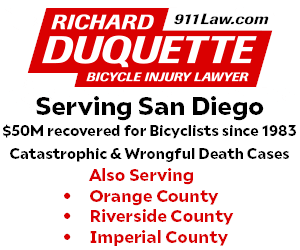Cycling is not only an excellent mode of transportation but also a great way to stay healthy and reduce your carbon footprint. However, cyclists often face risks on the road, from careless drivers to unexpected obstacles. By understanding the basics of accident prevention, cyclists can stay safer and enjoy their rides with peace of mind. This guide highlights key strategies every cyclist should adopt to reduce the likelihood of accidents and protect themselves on the road.
Understand Your Rights and Responsibilities
Cyclists have a unique position on the road, sharing space with motor vehicles while adhering to traffic laws. Knowing your rights and responsibilities is the first step toward preventing accidents. Cyclists are legally considered vehicles in most jurisdictions, which means they must follow traffic signals, ride in the direction of traffic, and use designated bike lanes where available.
In the event of an accident, understanding your legal options is essential. Reliable bike accident lawyers emphasize the importance of knowing how to handle the aftermath of a collision, including documenting the scene, obtaining witness statements, and filing a claim if necessary. Staying informed about legal protections ensures that cyclists can seek justice and support when needed, while also reinforcing the importance of riding responsibly.
Invest in Proper Gear and Equipment
The right gear can make a significant difference in preventing accidents and minimizing injuries if a collision occurs. A properly fitted helmet is non-negotiable, as it provides critical protection in case of a fall or impact. Ensure your helmet meets safety standards and replace it after any major crash.
High-visibility clothing or reflective accessories are also essential, especially when riding at night or in low-light conditions. These items make it easier for drivers to see you, reducing the risk of accidents caused by poor visibility.
Your bike should be equipped with front and rear lights, as well as functioning brakes and properly inflated tires. Regular maintenance checks can help you catch potential issues before they lead to accidents, ensuring that your bike is in top condition for every ride.
Stay Alert and Anticipate Hazards
One of the most effective ways to prevent accidents is by staying alert and anticipating potential hazards. Distractions such as listening to music or using a phone while riding can reduce your awareness and reaction time. Keeping your eyes on the road and scanning your surroundings allows you to spot obstacles, pedestrians, and vehicles early, giving you time to react appropriately.
Pay close attention to intersections, where many accidents occur. Be prepared for drivers who may not see you, especially when making turns or merging. Eye contact with drivers can help confirm that they’ve noticed you but never assume they will yield the right of way.
Ride Defensively
Defensive riding is a mindset that prioritizes safety over speed or convenience. This approach involves anticipating the actions of other road users and adjusting your behavior to minimize risk. For example, assume that parked cars may suddenly open their doors, and ride far enough to avoid the “door zone.”
Similarly, be cautious when approaching driveways or parking lot exits, as drivers may not always check for cyclists. Use hand signals to communicate your intentions clearly, and avoid sudden movements that might confuse drivers or pedestrians. Riding predictably helps others share the road safely with you.
Accident prevention is a combination of awareness, preparation, and responsible behavior. By understanding your legal rights, investing in proper gear, staying alert, riding defensively, and choosing safe routes, you can reduce your risk and enjoy cycling with greater confidence. Whether you’re a seasoned rider or just starting, adopting these strategies ensures that your time on the road is both safe and rewarding.
No products found.

















